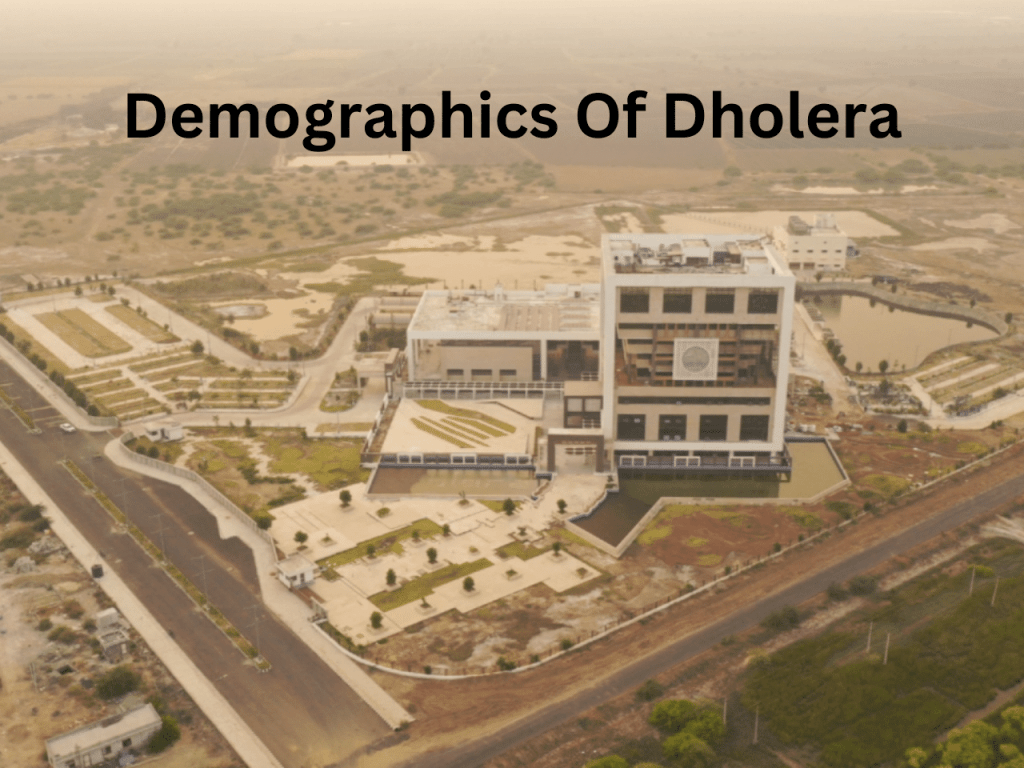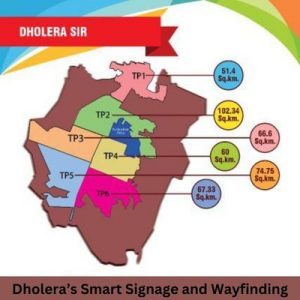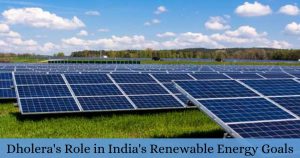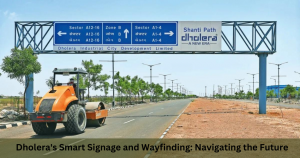A Glimpse into the Future Smart City
Dholera, a village in the Dhandhuka taluka of Ahmadabad district in Gujarat, is not just any rural settlement. It is a place brimming with potential, earmarked to become one of India’s first smart cities under the ambitious Delhi-Mumbai Industrial Corridor (DMIC) project. With a population of 2,779 per the 2011 Census, Dholera is a microcosm of rural India, poised for transformation. Nestled in the western state of Gujarat, India lies a city that epitomizes the aspirations of modern urban planning – Dholera. Boasting being India’s first planned greenfield industrial city, Dholera is not just about its infrastructure and economy but also about its people.
Mirrikh Infratech is a real estate company based in Surat city, dedicated to helping individuals and businesses realize their dreams of owning a piece of the futuristic Dholera, Ahmedabad. We have helped investors diversify their portfolios by offering a new way to invest in the vibrant Dholera.
With more than a decade of experience, we offer exceptional solutions that meet our customers’ unique needs and goals.
Opportunity to Live in a Smart City and own a land here with a minimum investment.
Generating Maximum benefit for a minimum investment.
Educating and spreading awareness about the wonderful opportunity to invest & giving a chance to live a better lifestyle for future generations.
By choosing locations of projects suitable for future growth, Projects in Residential, Industrial & Commercial Category, Mirrikh Infratech has completed over 8 projects in Dholera, currently, 2 projects are ongoing. In this period, the company has created a massive land bank, helping in making a foundation to launch projects in the future continuously Dholera.
Population Dynamics
The village of Dholera is home to 576 families, with a sex ratio of 957 females for every 1,000 males, which is slightly lower than the national average. The child-sex ratio stands at 970, indicating a healthy balance in the younger demographic. Children aged 0-6 years make up 12% of the population, signifying a young and potentially productive age structure that could be the driving force behind Dholera’s development. The population of Dholera comprises a mix of people from various backgrounds, including Gujaratis, migrants from other states, and a growing expatriate community. While Gujaratis form the majority ethnic group, there is also significant diversity with people hailing from states like Maharashtra, Rajasthan, Uttar Pradesh, and beyond.
Literacy and Education
Education plays a crucial role in shaping Dholera’s demographics, with the city boasting of several educational institutions catering to diverse academic interests. From engineering colleges to vocational training centers, Dholera offers avenues for skill development and knowledge enhancement, ensuring that its populace is equipped to participate in the global economy. Dholera boasts an impressive literacy rate of 80.29%, higher than the district average of 75.3%. Male literacy stands at 89.17%, while female literacy is at 71%, reflecting a gap that needs to be addressed as the village progresses towards urbanization. Education, being a cornerstone for growth, is likely to receive a significant boost with the influx of smart city infrastructure.
Caste and Workforce
The Scheduled Caste (SC) population constitutes 1.3% of the village, while the Scheduled Tribe (ST) population is a mere 0.1%. In terms of employment, 969 individuals are engaged in work activities, with 87.4% involved in main work, which includes employment for more than 6 months of the year. Agriculture remains the primary occupation, with 91 cultivators and 306 agricultural laborers, reflecting the rural economy’s reliance on farming.
Dholera’s economy is primarily driven by industries such as manufacturing, logistics, and renewable energy. The city’s Special Investment Region (SIR) status and its strategic location along the Delhi-Mumbai Industrial Corridor (DMIC) have attracted investments from both domestic and international players, leading to job creation and economic prosperity. The workforce in Dholera is characterized by a blend of skilled and unskilled labor, with opportunities for both blue-collar workers and white-collar professionals.
The Smart City Vision
The transformation of Dholera into a smart city is set to revolutionize its demographics. The project envisions state-of-the-art infrastructure, sustainable living, and a thriving economy that could attract a diverse population from across the country. This demographic shift will likely bring in skilled labor, professionals, and a cosmopolitan culture, reshaping the social fabric of Dholera.
Challenges and Opportunities
As Dholera transitions from a village to a smart city, it faces the challenge of inclusive growth. Ensuring that the existing population benefits from the development is crucial. Education and skill development will be key to enabling the villagers to participate in the new economy. Moreover, balancing the influx of new residents with the needs of the local community will be essential to maintain social harmony.
The demographics of Dholera today present a snapshot of a community at the threshold of change. With the smart city project underway, the next census is likely to tell a story of transformation, innovation, and diversity. Dholera’s journey from a quiet village to a buzzing smart city is not just about numbers and statistics; it’s about the aspirations of its people and the promise of a better future.




